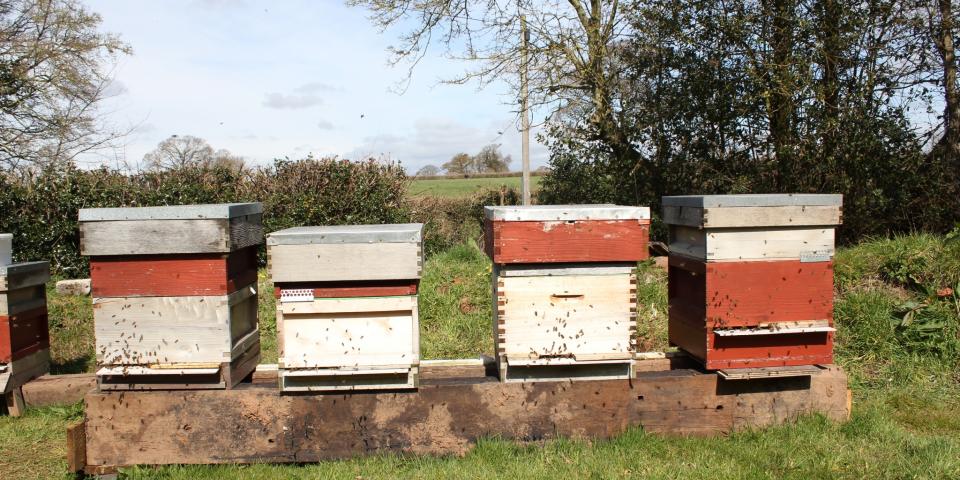- In:
- Posted By: jenifer
- Comments: 0

What a perfect day to meet thousands of bees - sunshine, blue sky and in the company of fellow budding beekeepers as we met at the Exeter branch's apiary today for our first practical lesson on handling bees.
The sound around the hives is incredible as you walk towards them all suited up in trepidation of what is about to happen. David showed the group how to use a smoker - the aim is not to smoke the bees out completely but to gently encourage them back into the hive. Their natural instinct, when faced with smoke, is to gather food for themselves in readiness to leave their home if necessary. With the bees distracted we could then open up the hives, remove the supers which had some food stores in and then take out each brood frame to check the state of the colonies as well as look for their respective queens.
We could see different stages of brood as well as capped cells with just a small number of drone cells - all looking very healthy. Remember drones (the boys) don't survive through winter, so at this time of year all the colonies are female worker bees with young bees emerging from the cells. In fact we watched one or two new bees making their way into the world as they chewed their way through the caps covering their cells.
Our group opened up two hives and in both we easily found the queens once we knew what we were looking for - in one hive the queen was marked with blue on her thorax and in the other she was unmarked.
We also saw in the second beehive what bees do when there's a gap in the brood frames because instead of having 12 frames in the National hive, there were 10 with foundation plus one dummy board, leaving a considerable gap between one frame and the wall of the brood box. In this gap the bees had already been drawing out comb to bridge the gap. David showed us how to clear the comb and brought forward one of the empty foundation frames from the back of the frame set and shuffled them all up tight with the dummy board pushed hard up against the frames so the bees can't get the other side to fill the gap. We'll see in a couple of weeks how this colony and the others have been getting on when we return for another practical lesson in beekeeping.
I have to say I am totally bitten by the beekeeping bug - can you tell? This time I took a camera with me so hopefully you will enjoy watching today's journey of becoming a beekeeper.
Much of the pollen being carried into the hives was yellow (did notice orange pollen sacs too). At this time of year it's likely the bees are gathering pollen from dandelions which have a bad reputation but they are our bees first natural pollen and nectar source after Winter. Bees work hard to get the nutritious nectar and pollen that they will consume in the hives until other flowers start blooming later during Spring.
The image used above has been published under the terms of a Creative Commons License and is attributed to Honey Bee.

